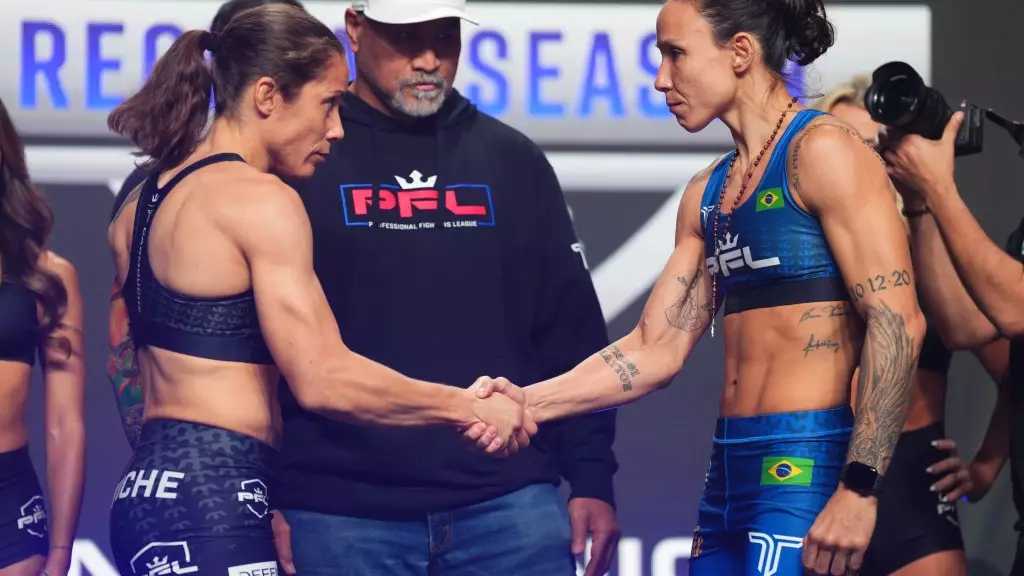The Professional Fighters League (PFL) is making significant waves in the mixed martial arts (MMA) landscape with its announcement of a brand-new tournament structure for 2023. This revised format constitutes a significant departure from the traditional season-based point accumulation system, which incentivized fighters to gain points over several matches in order to qualify for playoff rounds. By shifting to a tournament format, the PFL not only introduces fresh narratives for fighters but also revitalizes viewer engagement by creating a more straightforward competitive ecosystem. Instead of pursuing points, fighters now compete directly for victory in knockout-style rounds, enhancing the thrill for both competitors and fans.
A closer look into the women’s flyweight division reveals a robust and competitive field filled with experienced names. The tournament features two former Bellator champions: Liz Carmouche and Juliana Velasquez. Their storied rivalry, showcased through a trilogy that left Velasquez with three losses, adds a palpable tension to the tournament. The inclusion of accomplished fighters such as Kana Watanabe and Taila Santos raises the stakes even higher. Santos, a seasoned UFC fighter, brings an impressive record to the mat. Alongside promising talents like Jena Bishop and the undefeated Elora Dana, the flyweight tournament is poised to deliver compelling match-ups that are not only competitive but also imbued with personal narratives.
Talent Pool in Bantamweight Division
On the men’s side, the bantamweight division boasts a lineup replete with experienced contenders and promising prospects. Leading the charge is Magomed Magomedov, a recent Bellator title challenger, known for his tactical prowess and fighting acumen. Alongside him is Leandro Higo, another seasoned competitor with a reputation for durability and skill inside the cage. Emerging talents such as Sarvarjon Khamidov and Ciaran Clarke, both undefeated, bring anticipation as they seek to maintain their perfect records against strong opposition. The pressure for these fighters is tangible as they navigate through seasoned veterans while staying true to their potential. With additional talent like Ali Taleb and Kasum Kasumov also vying for supremacy, the bantamweight tournament promises to deliver intense action that reflects the sport’s unpredictability.
Moreover, the alteration in the prize structure is noteworthy; whereas past champions contended for a staggering $1 million reward, the new format offers a $500,000 bonus to tournament winners. While this is still a significant financial incentive, it reflects a transitional phase for PFL as it boldly redefines its competitive ethos. The prospect of decreased winnings may alter strategic decisions for fighters, shaping their fight approach as they maneuver through the tournament.
The forthcoming PFL tournaments, set to kick off on April 11, signify a critical evolution within the organization and the broader MMA landscape. By contending with a revamped format where fighters must prove themselves through direct confrontation rather than point accumulation, the PFL enhances both competitive integrity and entertainment value. As fans eagerly await the first round’s matchups, the stage is set for a gripping display of skill, resilience, and strategy within the octagon. The implications of this new structure could very well shape the landscape of MMA for years to come, attracting both fighters and viewers to this exciting evolution.

